The importance of an anti-inflammatory diet for dogs

by Narelle Cooke, Canine Nutritionist
Most of us would be familiar with inflammation – it's the redness, heat, swelling, and pain around tissues and joints that occurs in response to an injury, irritation, or infection. Inflammation is a natural process that the body undertakes to repair damaged tissues and heal, and it’s an essential component of the immune system and survival. What we don’t want is for that initial inflammatory response to continue, as the research is quite clear that chronic, unresolved inflammation is associated with a wide range of different disease states that our dogs are experiencing today, including the increase in cancer rates.1

What many pet parents may not realise is that diet is one of the biggest contributing factors to chronic inflammation in dogs.1, 2 Unfortunately, chronic low-grade inflammation that occurs in response to feeding a pro-inflammatory diet is usually not apparent in the short term, but when foods that trigger inflammation are fed over a period of years, that’s when we see an increase in degenerative diseases.3
The good news is that studies have also identified a number of powerful anti-inflammatory foods that we can easily incorporate into our dog’s diets. Let’s have a look at some of them.
A raw food diet
Studies have shown that dogs fed a raw or whole food diet have lower levels of pro-inflammatory markers in the body and higher levels of anti-inflammatory markers, as compared to dogs fed a standard commercial kibble diet.2, 4
One of the main reasons for this finding is that kibble, by the very way that it is manufactured via the extrusion process, triggers a chemical reaction in the food called the Maillard reaction, which then leads to the production of toxic and pro-inflammatory compounds such as acrylamide and Advanced Glycation End Products (AGEs).5, 6
Due to their pro-inflammatory and pro-oxidant action in the body, AGEs damage tissues and delay tissue healing and repair. AGES can also cause damage to DNA. In dogs, AGEs have been linked to diseases such as diabetes, obesity, kidney and cardiovascular diseases, vascular dysfunction, connective tissue disorders, skin issues, allergies, cataracts in the eyes, osteoarthritis, and neurodegenerative diseases such as canine cognitive dysfunction syndrome.5, 6

Feed a variety of fresh fruits and vegetables
Fruits and vegetables are rich sources of phytonutrients. Phytonutrients, or phytochemicals as they’re sometimes referred to, are compounds found exclusively in plants – they’re what give fruits and vegetables their vibrant colour, and which have been shown to prevent chronic diseases not only in humans but in our dogs as well.7
Phytonutrients act as powerful antioxidants that help to strengthen the immune system, support cellular health, reduce inflammation, and decrease the incidence of degenerative diseases such as diabetes, arthritis and cancer.8-10 That’s why feeding our dogs a rainbow of fresh foods each day is a great way to support their overall health and longevity. The enzymes found in fresh fruits and vegetables can also aid in the digestive process and support gut health.
In a study conducted to evaluate the effects of vegetable consumption on the risk of developing bladder cancer in Scottish Terriers, it was found that dogs consuming vegetables at least 3 times per week experienced a reduction in cancer risk of between 69-88% compared to dogs consuming kibble alone. The vegetables highlighted in the study included cruciferous, green-leafy, yellow-orange, tomatoes, green beans, green peppers, celery and peas.11
The brain is extremely vulnerable to oxidative damage, causing death of neurons and resulting in reduced cognitive function and changes in behaviour.12 Senior dogs often display canine cognitive dysfunction with impaired learning and memory, increased anxiety, disorientation, a reduced ability to interact socially, house soiling, destructive behaviours, lethargy and disturbances in sleep patterns.13 Feeding senior dogs a diet rich in antioxidants from a mixture of fruits and vegetables has been shown to counteract the effects of free radical damage and inflammation on the brain, leading to decreased rates of cognitive decline as they aged and improved age-related behavioural changes.14
An overview of some great plant sources of anti-inflammatory phytonutrients for our dogs include:
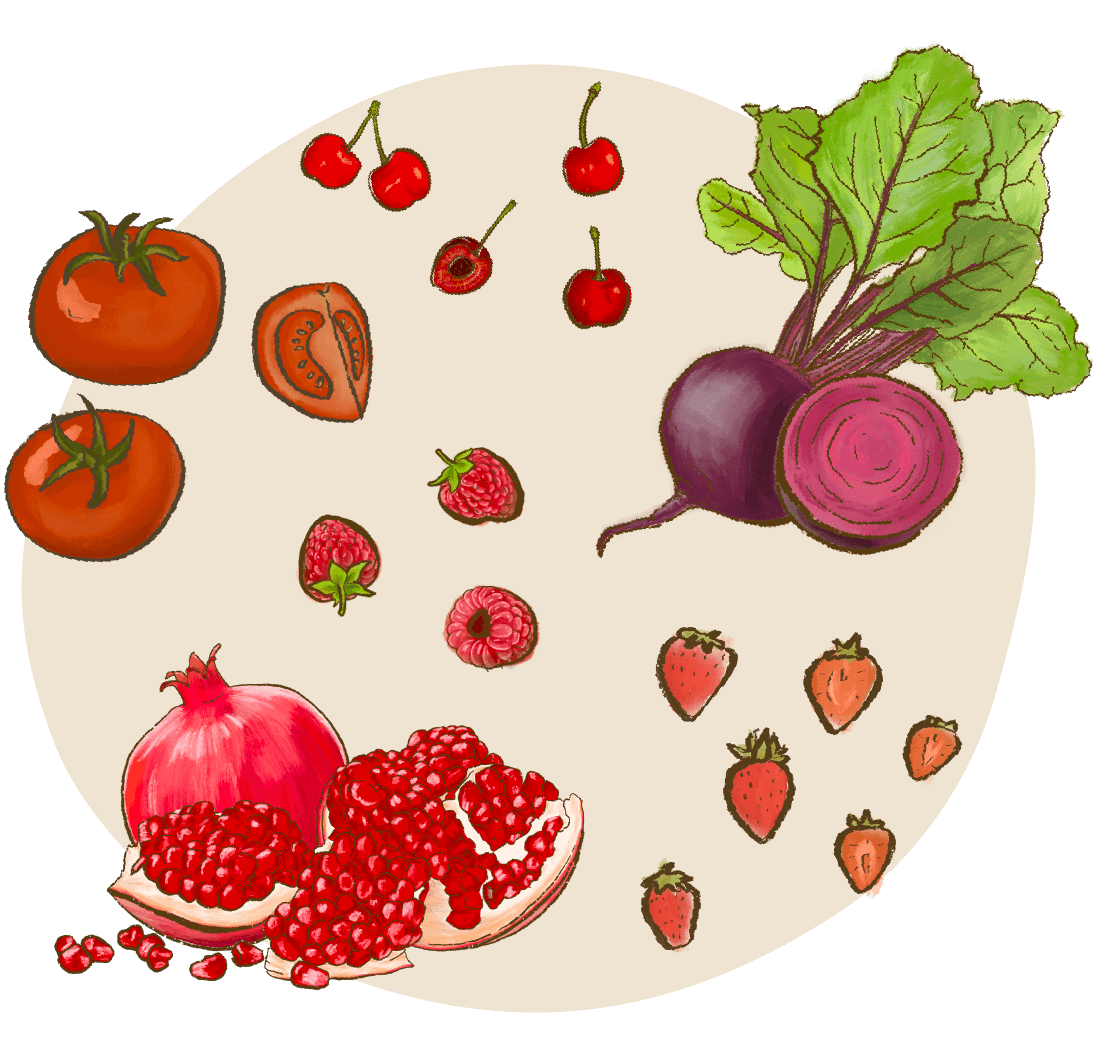
Red
Protect against heart and liver disease, anti-cancer, DNA protective, antioxidant, anti-inflammatory, support urinary tract health.
Recommend Plant Matter: Tomatoes, Pomegranates, Strawberries, Raspberries, Cherries (Flesh Only), Beetroot
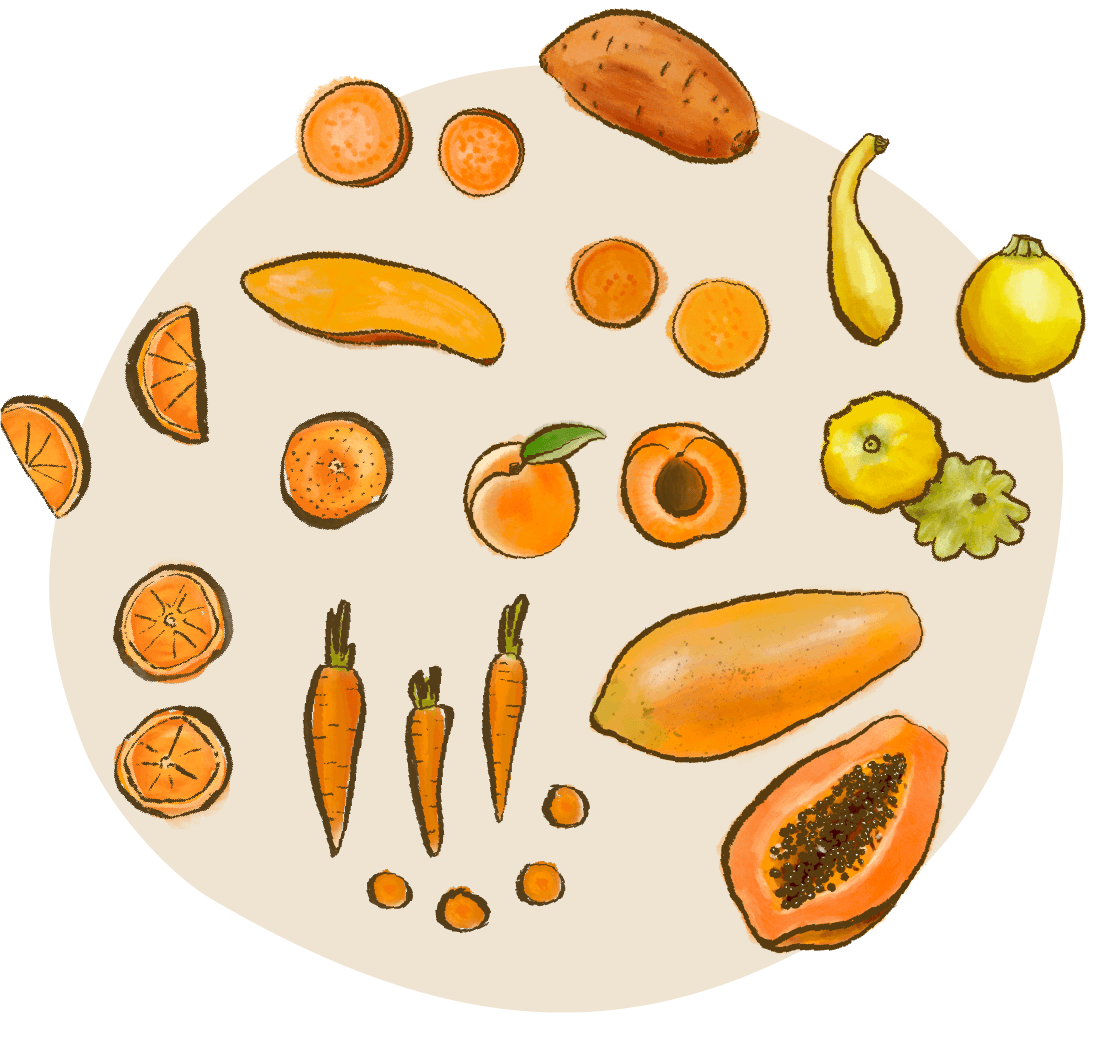
Yellow/Orange
Protect the nervous system, support heart health, maintain skin and eye health, boost the immune system, help build strong bones.
Recommend Plant Matter: Carrots, Oranges, Sweet Potato, Apricot (Flesh Only), Squash, Papaya
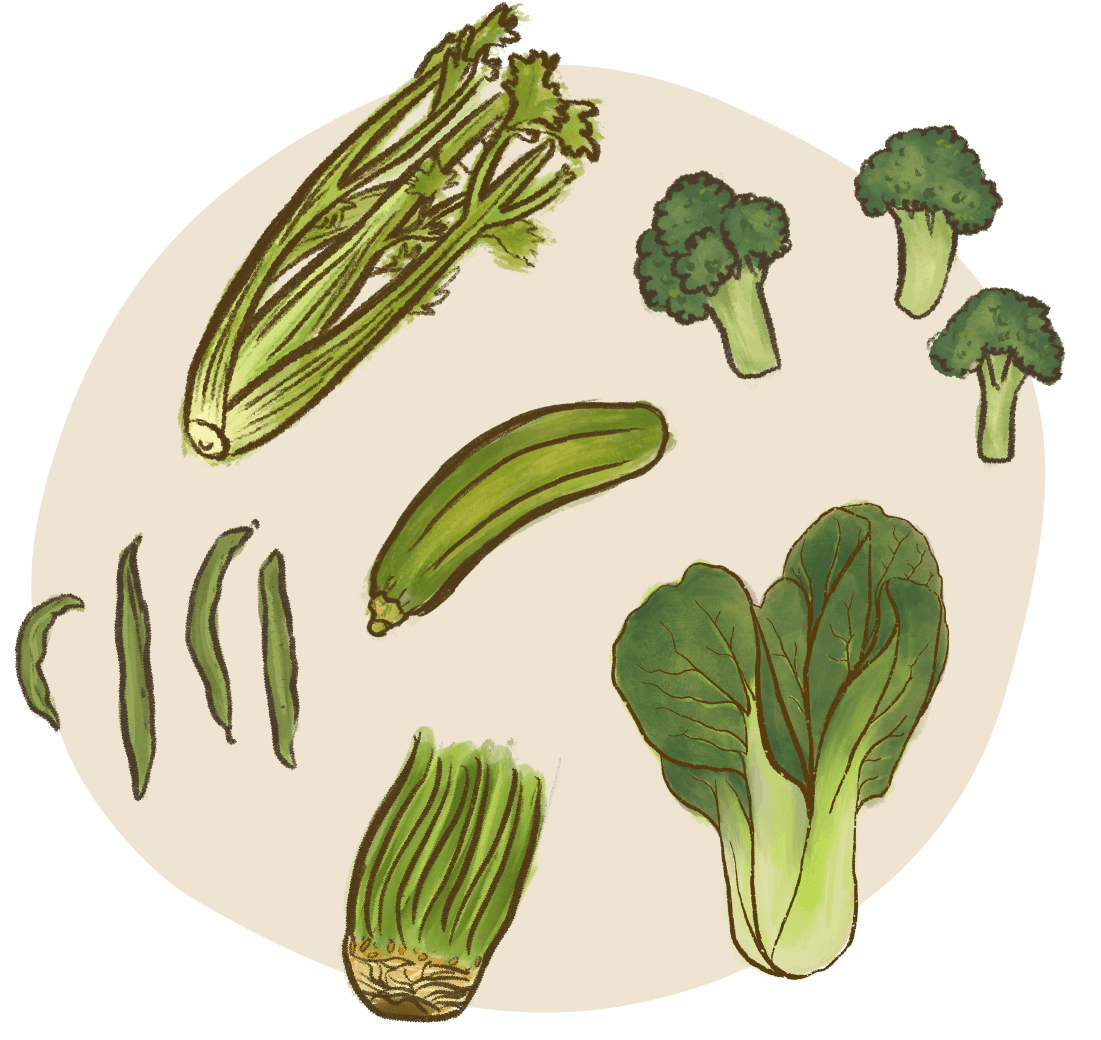
Green
Support healthy arteries, liver and lung function, promote cellular health, assist in wound healing and reproductive health, anti-inflammatory.
Recommended Plant Matter: Celery, Broccoli, Beans, Zucchini, Wheetgrass, Bok Choy
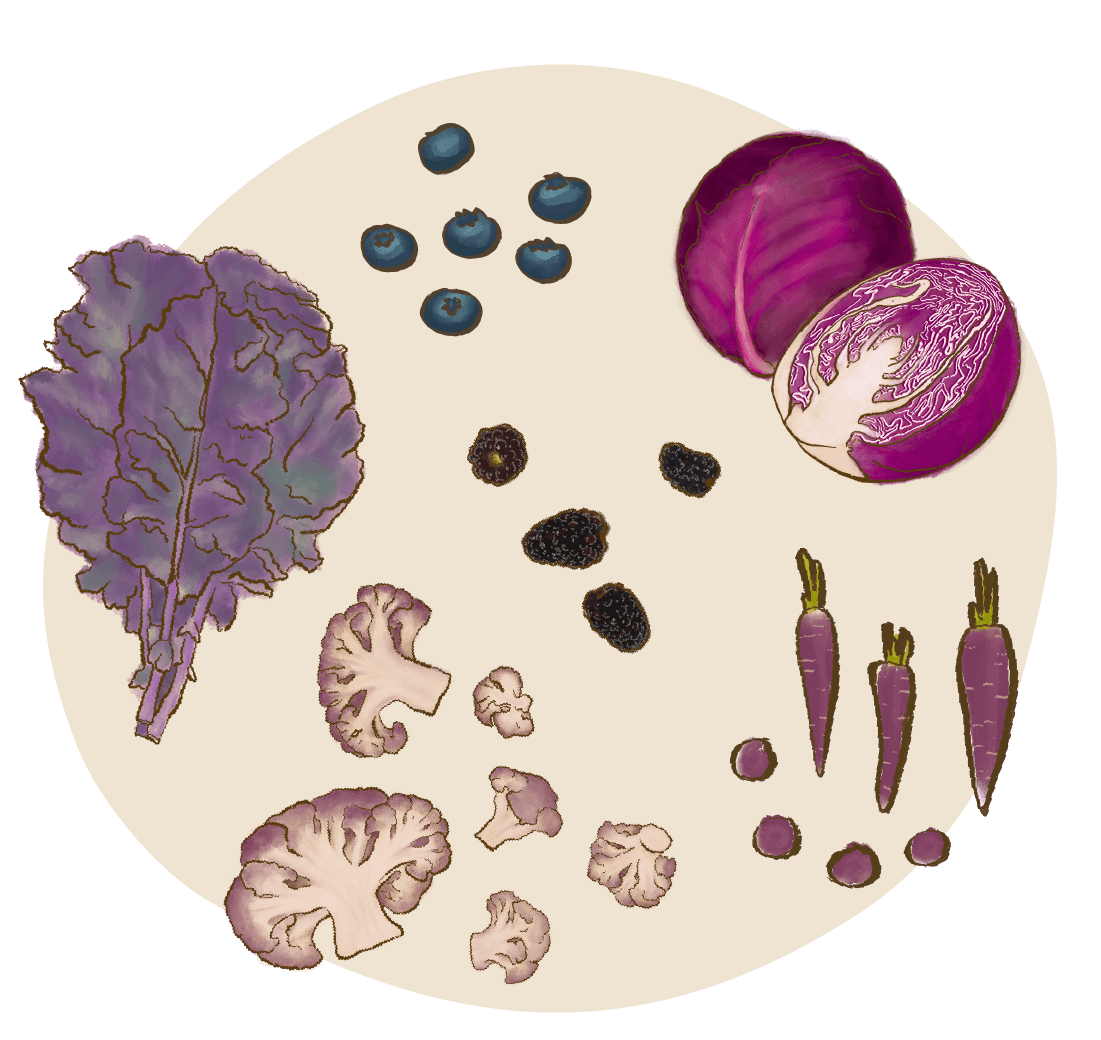
Blue/Purple/Black
Support heart, brain and cognitive health, important for memory and healthy aging, anti-inflammatory, regulate healthy digestion.
Recommended Plant Matter: Purple Kale, Blueberries, Red Cabbage, Blackberries, Purple Cauliflower, Purple Carrots
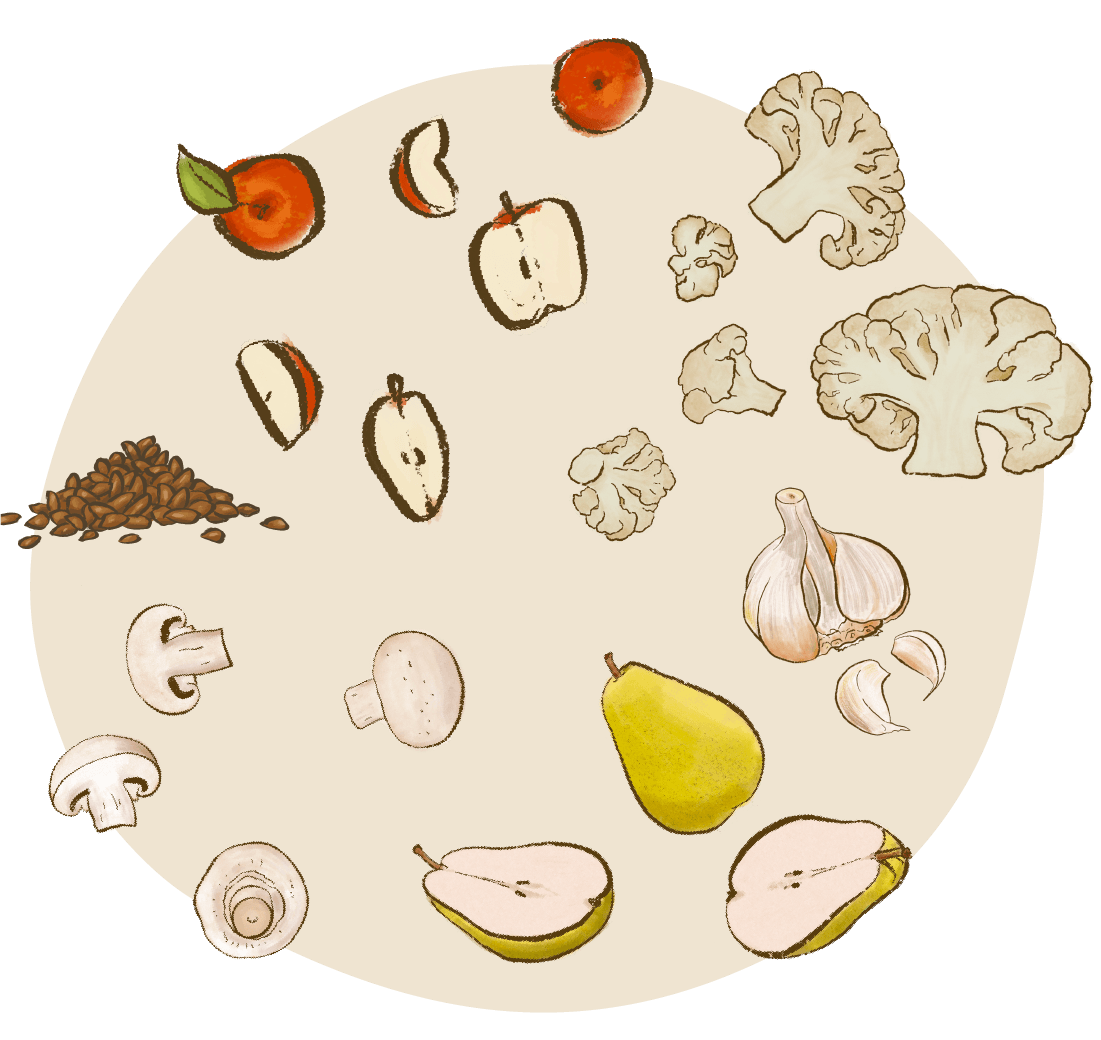
White/Brown
Anti-cancer, anti-inflammatory, assists with liver health, promote healthy bones.
Recommend Plant Matter: Mushrooms, Apples, Flaxseed, Cauliflower, Pears, Garlic
Increase dietary sources of omega-3 fats
Most commercial kibbles are rich in vegetable oils such as safflower, sunflower, canola, and soybean oil, making our dog’s diets disproportionately high in omega-6 fatty acids. The regular consumption of omega-6 fats is known to contribute to low-grade inflammation and oxidative stress in the body.15
Raw and whole food diets that contain oily fish such as salmon, sardines and mackerel provide a great source of the omega-3 fats eicosapentaenoic acid (EPA) and docosahexaenoic acid (DHA) for our dogs, which are known to have potent anti-inflammatory effects in the body.16-18 Fish and seafood are also good sources of immune-boosting nutrients such as selenium, zinc and vitamin E.19

Ensure adequate fibre
Dietary fibre is a crucial component of a healthy diet for our dogs. Multiple studies show that adequate dietary fibre intake is associated with a decrease in inflammation and the risk of chronic inflammatory diseases.20
Several types of fibre also have prebiotic properties. Prebiotics are specific types of dietary fibre that are selectively fermented by beneficial organisms in your dog’s intestine. By acting as a food source for bacteria, prebiotics promote the growth of beneficial bacteria, which then go on to produce highly valuable compounds called short-chain fatty acids (SCFAs). SCFA work in the body to enhance immune system function and assist in the management of inflammatory disorders such as inflammatory bowel disease (IBD).21 Great sources of fibre for our dogs include psyllium, green banana, inulin and larch arabinogalactans.
Make it golden
Turmeric (Curcuma longa) contains a number of active constituents with powerful anti-inflammatory and antioxidant properties. Given the impressive range of health benefits of turmeric for humans, it’s not surprising that turmeric can also provide a range of health benefits for our dogs as well, particularly in reducing joint pain and inflammation.22
Unfortunately, raw turmeric root has poor bioavailability in the body as it is not soluble in water. However, the active constituents (curcuminoids) in turmeric are lipophilic (they attach to fats) so a good way to improve absorption is by mixing powdered turmeric with good quality, healthy fats. A popular choice in this regard is coconut oil. Piperine, a compound of black pepper, has also been shown to make curcumin more bioavailable.
OTHER HELPFUL STRATEGIES
Support the microbiome
There is an ever-increasing amount of research supporting the link between the microbes in our gut and health effects. Several studies have evaluated the impact of meat-based raw food diets versus extruded kibble diets on the gut microbiome of dogs and found that the more natural raw food diets promoted a more diverse and abundant microbiome, along with positive changes in the readouts of healthy gut functions, as compared to the extruded kibble diets.23-25 In dogs, lower bacterial diversity is commonly associated with gastrointestinal dysbiosis, compromised immune function and intestinal inflammation.26, 27
Keep your dog lean
Obesity is the most common nutritional disease in dogs and unfortunately, its incidence has increased rapidly in recent decades. Obesity has been linked to the increased production of pro-inflammatory molecules in the body, the downstream effect of which is a state of chronic inflammation and disease development, including cancer.28
The research indicates that dogs fed a commercial kibble diet are more likely to be overweight than dogs fed a fully (or at least partly) raw food diet,29 so switching your dog to a raw food diet is an important step in helping our pets achieve and maintain not only a healthy body weight, but for reducing inflammation and disease risk as well.
Summing up
Unfortunately, we can’t control everything that contributes to inflammation in our dogs, but we can control what they eat. It’s clear from the research that anti-inflammatory diets are composed of natural whole foods that don’t produce inflammation in the body, as opposed to highly processed foods that have been subjected to extreme heat treatments and which often contain a range of artificial ingredients such colours, flavours and preservatives. By including a range of different anti-inflammatory foods in your dog’s diet today, you’ll be helping to prevent chronic inflammation from taking hold and giving your dog the best chance at a long and happy life.
About the Author - Narelle Cooke, Canine Nutritionist.

Narelle is a clinical Naturopath, Nutritionist and Herbalist for both people and pets, and operates her wellness clinic ‘Natural Health and Nutrition’ in Dural, Sydney.
Being a lifelong dog-owner and currently meeting the demands of three French Bulldogs, two German Shepherds and a Burmese cat, Narelle is as passionate about the health and wellbeing of our pets as she is about their owners. And it was this strong desire to see her own pets live their longest and best lives that led her to hours of personal research and additional study in the area of natural animal health and nutrition.
· Bachelor of Health Science(Naturopathy) (ACNT)
· Bachelor of Agricultural Science (honours) (The University of Melbourne)
· Advanced Diploma of Naturopathy (AIAS)
· Advanced Diploma of Nutritional Medicine (AIAS)
· Advanced Diploma of Western Herbal Medicine (AIAS)
· Certificate III in Dog Behaviour and Training (NDTF)
· Certificate in Natural Animal Nutrition (CIVT)
· Certificate in Animal Health Sciences (CIVT)
· Certificate in Animal Nutrition (HATO)
References
